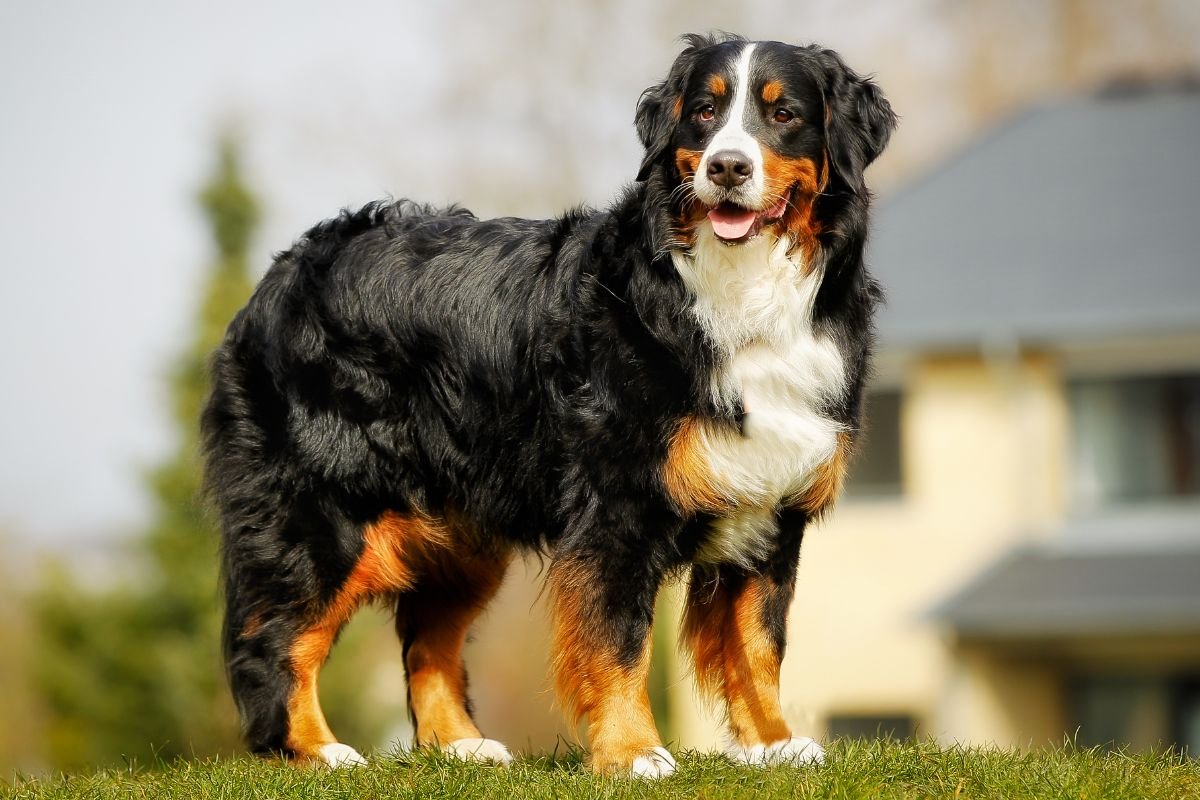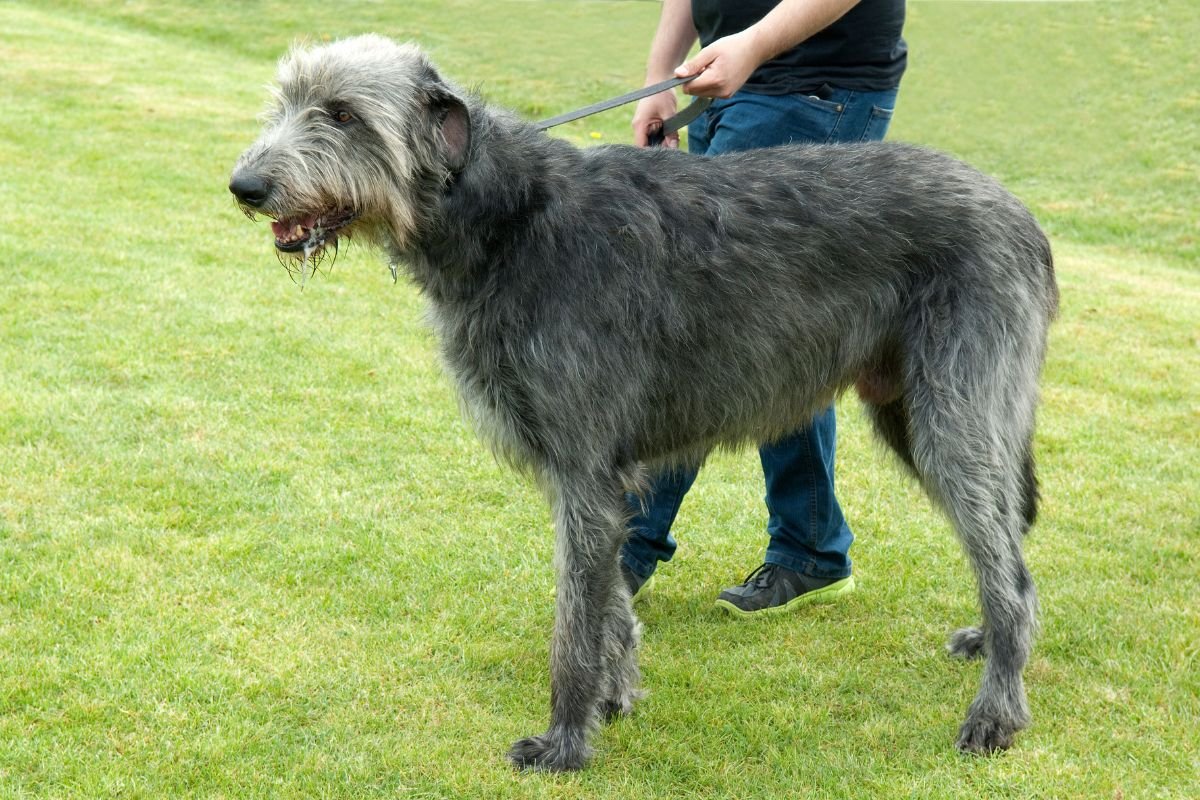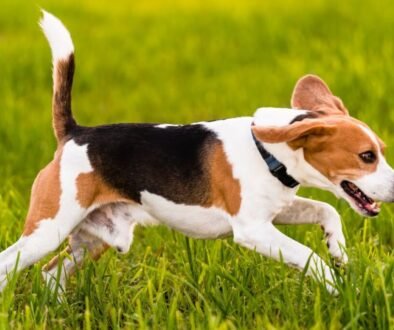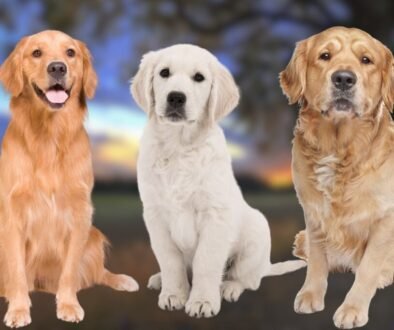Looking For A Large Dog? Check Out Our List Of The Best Large Dog
Why Large Dog Breeds Are So Lovable
Have you ever wondered why people fall in love with large dogs despite their intimidating size? What if the very traits that make them seem overwhelming are what make them the perfect family companions?
Big dogs often get a bad rap for being high-maintenance or too large for the average home, but they are also some of the most loyal, loving, and gentle creatures you’ll ever meet. If you’ve ever heard the phrase “gentle giants,” you’ll know exactly what we mean. From their protective instincts to their oversized cuddles, large dog breeds offer something truly special.
This blog is here to celebrate those larger-than-life canines, debunk a few myths, and help you decide whether a big dog might be your next best friend. Join us as we explore the lovable world of large dog breeds!
What Defines a Large Dog Breed?
A large dog breed is generally defined as weighing at least 50 pounds and standing over 22 inches tall at the shoulder. While their physical size is their most noticeable trait, large dogs often come with distinct personality quirks and care needs that set them apart from their smaller counterparts.
The Top 10 Large Dog Breeds You’ll Adore
-
Great Dane

Nicknamed the “Apollo of Dogs,” the Great Dane is one of the tallest dog breeds in the world, often standing over 30 inches tall. Despite their imposing stature, Great Danes are friendly, affectionate, and surprisingly gentle.
Fun Fact: In 2012, Zeus, a Great Dane, was recognized as the world’s tallest dog by Guinness World Records, standing 44 inches tall!
Best For: Families looking for a gentle, laid-back companion who gets along with children and other pets.
-
Bernese Mountain Dog

With their stunning tricolor coats and calm demeanor, Bernese Mountain Dogs are as majestic as they are lovable. Originally bred for farm work in the Swiss Alps, these dogs are known for their loyalty and gentle nature.
Fun Fact: Bernese Mountain Dogs were traditionally used to pull carts, and they’re still strong enough to carry small loads today!
Best For: Families with spacious yards and lots of love to give.
-
Saint Bernard

Thanks to their starring role in movies like Beethoven, Saint Bernards have become iconic family dogs. These gentle giants are famed for their patience, making them excellent around kids.
Fun Fact: Saint Bernards were originally bred to rescue travelers in the Swiss Alps and are credited with saving over 2,000 lives!
Best For: Households that enjoy outdoor activities but can also manage a drooly companion!
-
Newfoundland

Affectionately called “Newfies,” these dogs are natural-born swimmers with webbed feet! They’re famous for their life-saving instincts and make incredible companions for water-loving families.
Fun Fact: Newfoundlands were bred to help fishermen, and they’ve even been known to save people from drowning.
Best For: Active families who enjoy outdoor adventures and can handle a dog with lots of fur.
-
Mastiff

Mastiffs are one of the oldest dog breeds, dating back thousands of years. Known for their protective instincts and calm demeanor, they make fantastic guard dogs and devoted family pets.
Fun Fact: Mastiffs were used in ancient Roman arenas to fight lions and gladiators!
Best For: Owners seeking a loyal, watchful companion with a heart as big as their size.
-
German Shepherd

As one of the most intelligent and versatile breeds, German Shepherds are often used in police work, search-and-rescue, and as service dogs. Their loyalty and trainability make them a favorite among families.
Fun Fact: The first guide dog for the visually impaired was a German Shepherd named Buddy in 1928.
Best For: Active households that can provide mental and physical stimulation.
-
Golden Retriever

Golden Retrievers are famous for their friendly and outgoing personalities. They’re great with kids and other pets, making them one of the most popular dog breeds in the U.S.
Fun Fact: Golden Retrievers often work as therapy dogs because of their calm and comforting nature.
Best For: Families looking for a cheerful, adaptable companion.
-
Irish Wolfhound

If you want a dog with a royal history, look no further than the Irish Wolfhound. These dogs were bred for hunting wolves and are known for their calm and dignified demeanor.
Fun Fact: Irish Wolfhounds are the tallest dog breed, capable of reaching the height of a small pony when standing on their hind legs!
Best For: Homes with lots of space and owners who appreciate a gentle but giant companion.
-
Rottweiler

Don’t let their tough exterior fool you—Rottweilers are incredibly loyal and affectionate with their families. Proper training and socialization are key to bringing out their sweet side.
Fun Fact: Rottweilers were originally bred to herd livestock and pull carts loaded with butchered meat to markets in Germany.
Best For: Experienced dog owners who can provide structure and consistent training.
-
Alaskan Malamute

Known for their wolf-like appearance and incredible strength, Alaskan Malamutes are playful, affectionate, and full of energy.
Fun Fact: Alaskan Malamutes were used during the Klondike Gold Rush to haul heavy loads in freezing conditions.
Best For: Outdoorsy families who love hiking and cold-weather activities.
What Makes Large Dogs Different from Smaller Breeds?
Did you know some large breeds are known as ‘couch potatoes’, while others thrive on high-energy adventures? Here are some key distinctions:
- Energy Levels: While some large breeds are high-energy (like the Alaskan Malamute), others are couch potatoes (like the Mastiff).
- Lifespan: According to the American Kennel Club (AKC), large breeds like Great Danes typically live 7–10 years, whereas smaller breeds often live 12–15 years.
- Training Needs: Due to their size, proper training is essential to prevent behavioral issues.
- Health Concerns: Large breeds are more prone to issues like hip dysplasia and heart problems.
Are Large Dogs a Good Fit for You?
Before bringing a large dog into your life, it’s essential to consider whether their size, temperament, and care needs align with your lifestyle. Let’s explore the pros and cons to help you make an informed decision:
Pros: Why Large Dogs are Amazing
- Gentle Giants: Many large breeds, like Great Danes and Bernese Mountain Dogs, are known for their calm and affectionate nature, making them excellent companions for families or individuals.
- Protective Nature: Large dogs are often natural guardians and can provide a sense of security to your home.
- Great with Kids: Breeds like Golden Retrievers and Newfoundlands are known for their patience and gentleness with children.
Cons: Challenges to Consider
- Space Needs: Large dogs require more room to stretch out and relax. If you live in a small apartment, accommodating a big breed might be difficult. Actionable Tip: If space is a concern, focus on breeds with lower activity levels, such as Mastiffs or Great Danes, which are surprisingly content lounging around.
- Higher Costs: Larger dogs eat more, require bigger beds, and typically incur higher medical expenses. Actionable Tip: Budget accordingly for food, veterinary care, and supplies tailored to their size.
- Travel Challenges: Traveling with large dogs can be more challenging as not all hotels, airlines, or rental properties accommodate big breeds. New Content: Look for pet-friendly accommodations ahead of time and consider road trips over flights for stress-free travel. Invest in an airline-approved travel crate if flying is unavoidable.
- Exercise Requirements: While some large breeds are couch potatoes, others—like Siberian Huskies or German Shepherds—need lots of physical and mental stimulation to stay healthy. Actionable Tip: Match your energy level with the breed. Research the specific exercise needs of the breed you’re considering to ensure you can meet their activity requirements.
Still unsure if a large dog is right for you? Take our quick quiz to find out!
Not sure if a large dog is the perfect match for your lifestyle? Use this quick checklist to find out! For every “Yes,” give yourself a point.
Lifestyle Compatibility Checklist
- Space: Do you have enough room for a large dog to move around comfortably (e.g., a spacious home or access to outdoor space)?
- Budget: Are you prepared for higher costs, like food, medical expenses, and large-sized supplies?
- Travel Plans: Are you able to adjust your travel plans to accommodate a large dog (e.g., pet-friendly hotels or road trips)?
- Time: Can you dedicate time for daily exercise, grooming, and care?
- Strength: Are you comfortable handling a strong dog on walks or when they get excited?
- Family Fit: If you have children, are they old enough to interact safely with a large dog?
- Breed Traits: Have you researched the specific needs and traits of large breeds you’re considering?
- Energy Match: Can you match your energy level with the dog’s? (For example, are you okay with an active breed needing daily exercise or a calmer breed that loves to lounge?)
How Did You Score?
- 6-8 Points: You’re ready! A large dog would likely fit well into your lifestyle. Start researching breeds that match your energy and living situation.
- 3-5 Points: You might need to make a few adjustments to accommodate a large dog. Consider factors like budget or energy level before making your decision.
- 0-2 Points: A large dog might not be the best fit right now. Smaller breeds or lower-maintenance pets could be a better option for your current lifestyle.
Caring for Large Breeds: Essential Tips
Ever wondered how much chow it takes to fuel a gentle giant like a Saint Bernard—or how many tennis balls a Golden Retriever can obliterate in one afternoon? Caring for large dog breeds comes with its own set of challenges and joys. Here’s a handy guide to help your big buddy thrive:
- Nutrition
Large breeds require a nutrient-rich diet to sustain their energy and muscle mass. Look for high-quality dog food specifically formulated for large breeds—it supports joint health and helps prevent overfeeding.
Actionable Tip: Use elevated bowls to reduce the risk of bloat, a serious condition that large breeds are prone to.
- Exercise
Big dogs need daily exercise to stay healthy and happy. Aim for 30-60 minutes of activity each day. Low-impact activities like hiking or swimming are ideal to keep their joints safe while burning off energy.
Actionable Tip: Protect their joints by encouraging swimming or walking on softer surfaces, like grass or sand.
- Training
When you’re dealing with dogs that could double as small horses, early training is non-negotiable. Start with obedience training and socialization to avoid accidental injuries and ensure your pup grows into a polite companion.
Actionable Tip: Positive reinforcement works wonders—reward your dog with treats, praise, or playtime for good behavior.
- Regular Vet Visits
Large breeds are prone to unique health risks, including bloat, heart disease, and joint problems. Staying on top of vaccinations, annual exams, and preventive care is key to catching issues early.
- Joint Health
Big dogs are often predisposed to hip dysplasia and arthritis, making joint care a top priority. Preventive measures can go a long way in keeping them mobile and comfortable.
Actionable Tip: Add joint supplements like glucosamine and chondroitin to their diet. Regular vet checkups are essential for early detection of joint issues.
- Grooming
Large dogs often come with impressive coats—and impressive grooming needs! Regular brushing helps prevent mats and manage shedding, especially in breeds like Newfoundlands or Saint Bernards.
Actionable Tip: Consider professional grooming for thick-coated breeds to prevent overheating in warm weather and keep their coats in top shape.
- Safety
A big dog needs plenty of room to stretch out but comes with unique safety concerns. Their strength and size require extra precautions to keep everyone safe during walks or playtime.
Actionable Tip: Use secure fencing and sturdy leashes to ensure your pup stays safe outdoors. Make sure you’re always in control when walking or playing.
Caring for a large breed means a little extra effort, but the rewards are just as supersized as they are. With the right care, your big buddy will be healthy, happy, and ready for all the adventures you can handle! 🐾
FAQs About Large Dog Breeds
Q: Are large dogs good with kids?
A: Absolutely! Many large breeds, like Saint Bernards and Golden Retrievers, are famously gentle with children.
Q: Do large dogs need a big backyard?
A: Not necessarily. While a yard helps, regular exercise is more important than the size of your living space.
Q: Are big dogs harder to train?
A: Not at all! Most large breeds are highly trainable, but their size makes early training crucial.
Q: How long do large dogs live?
A: On average, large dogs live 7-10 years, though some breeds, like the Great Dane, may have shorter lifespans.
Final Thoughts
Large dog breeds may seem daunting at first, but their loyalty, love, and companionship make them well worth the effort. Whether you’re looking for a protective guard dog, a cuddly lap dog (yes, even big dogs think they’re lap dogs!), or a playful outdoor companion, there’s a large breed out there for everyone.
Ready to welcome a gentle giant into your home? Don’t wait—start your journey today and experience the joy of having a big-hearted (and big-bodied) best friend.



